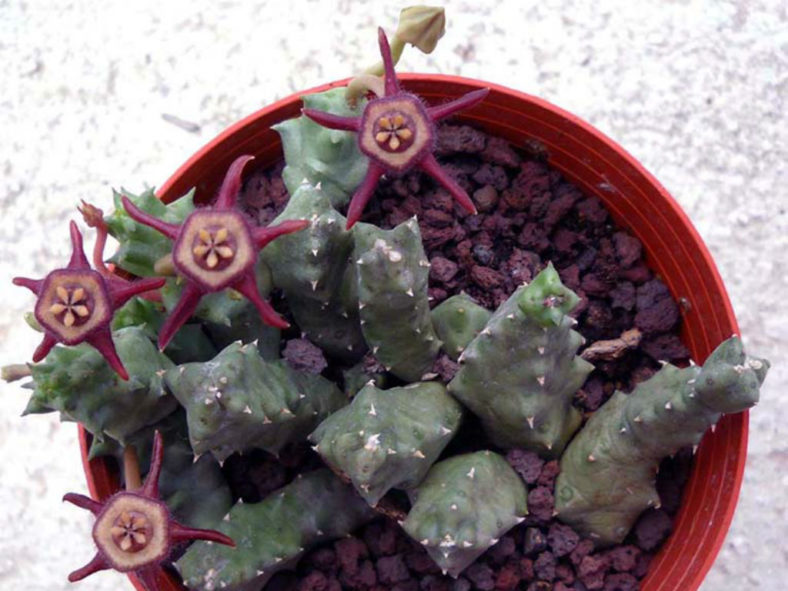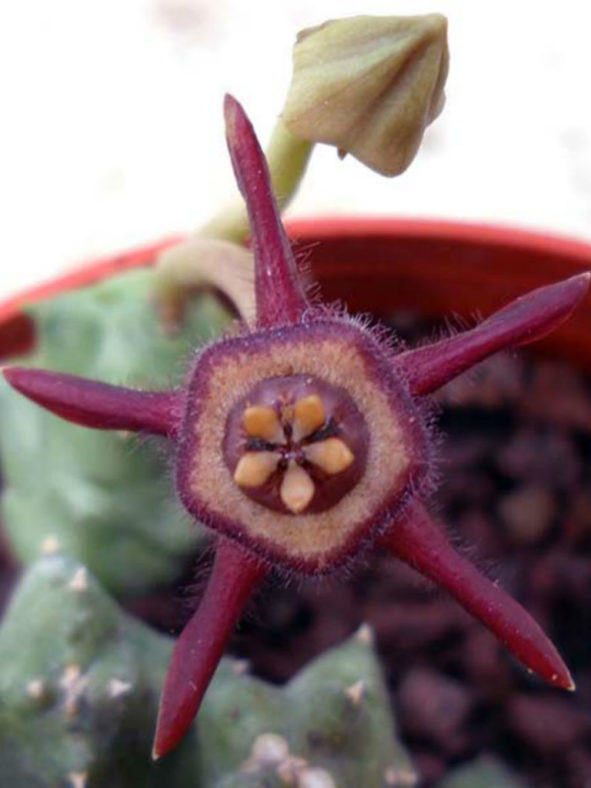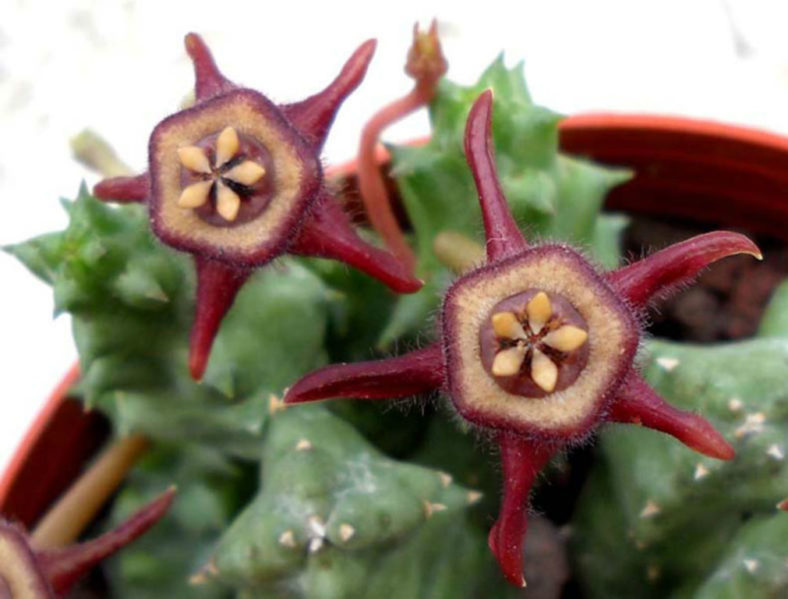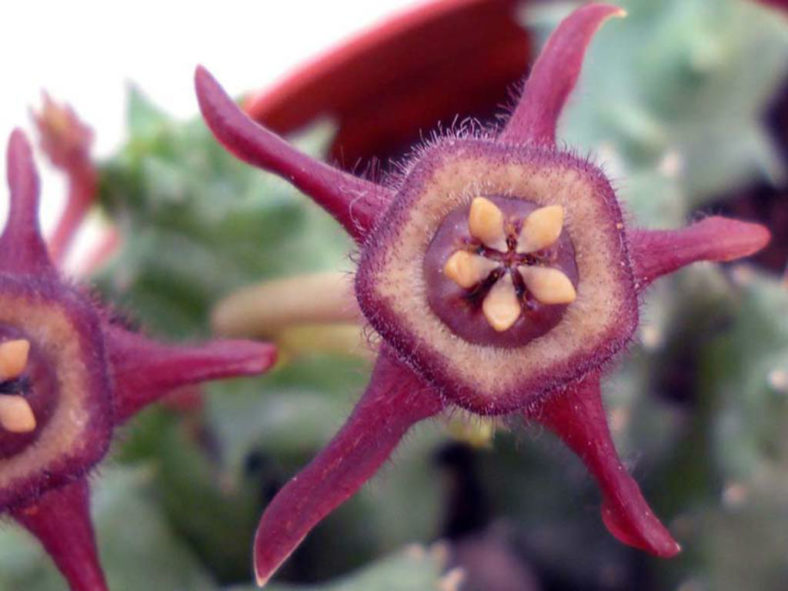Scientific Name
Duvalia caespitosa subsp. pubescens (N.E.Br.) Bruyns
Synonym(s)
Ceropegia caespitosa subsp. pubescens, Duvalia pubescens
Scientific Classification
Family: Apocynaceae
Subfamily: Asclepiadoideae
Tribe: Ceropegieae
Subtribe: Stapeliinae
Genus: Duvalia
Origin
Duvalia caespitosa subsp. pubescens is native to southern Namibia and South Africa (Northern Cape, Western Cape).
Description
Duvalia caespitosa subsp. pubescens, also known as Duvalia pubescens, is a dwarf succulent that forms a mat of dull dark green, egg-shaped to cylindrical stems with 4 to 5 indistinct ribs. The stems are procumbent or decumbent and grow up to 2 inches (5 cm) long and 0.8 inches (2 cm) thick.
The flowers are maroon, brown, or deep purple and usually appear in the fall. They are hairy, star-shaped with a raised annulus and five narrow petals, up to 1.2 inches (3 cm) in diameter, and held on short, pinkish stems.

Hardiness
USDA hardiness zone 11a to 11b: from 40°F (4.4°C) to 50°F (10°C).
How to Grow and Care
Stapeliads are relatively easy to grow. However, they should be treated as outdoor plants as they will easily rot indoors and cannot flower without exposure to outdoor temperature fluctuations. They should be grown under cover so that watering can be controlled. They require a reasonable amount of sunlight to promote flowering and maintain a well-shaped plant. Very shady positions will produce very poor flowering. Stapeliads come from climates where they survive extremely high temperatures in the summer months, so most growth is in spring and autumn, with flowering in autumn when the weather starts to cool down. In the growing season, water in moderation when needed, ensuring the soil is fairly dried out between waterings. Do not water between November 1 and March 1.
The easiest and best way to propagate Stapeliads is from stem cuttings, which can be taken virtually throughout the year. Seed is also a method of propagation.
See more at How to Grow and Care for Stapeliads.
Links
- Back to genus Duvalia
- Succupedia: Browse succulents by Scientific Name, Common Name, Genus, Family, USDA Hardiness Zone, Origin, or cacti by Genus
Photo Gallery
Click on a photo to see a larger version.


